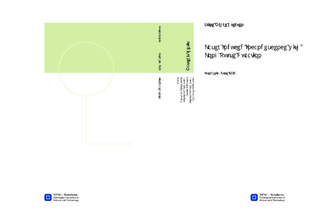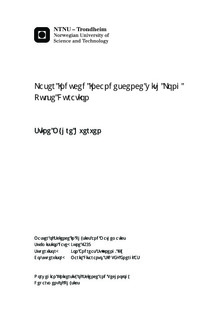| dc.description.abstract | Laser Induced Incandescence (LII) is a technique used to observe soot concentration and particle size in a flame. The LII signal is captured by an intensified CCD camera. Laser light impacts and heats soot particles within the flame, and the resulting intensity signal is detected. The LII signal is the radiation from the soot particles, and its temporal profile depends on many physical processes. The collected intensity images are further analyzed to generate the temporal profile of the LII signal.Detailed LII measurements were performed in order to study an unknown phenomenon which first appeared in a previous experiment at SINTEF. Two peaks were found to appear in the temporal LII signal when laser pulses of pulse duration longer than 100 ns were used.The main part of this thesis was dedicated to preparing the experimental setup, running LII measurements and analyzing temporal LII profiles. The LII measurements were performed on a small laminar ethylene flame with varying laser pulse duration and pulse fluence. An Nd:YAG laser with wavelength 532 nm was used, and later the first harmonic 1064 nm laser light. The temporal laser profiles had pulse duration in the range 50 to 450 ns, all rectangular in shape. The laser energy incident on the ethylene flame was varied using a combination of a half-wave plate and a beamsplitter.Several hypotheses were presented after the previous experiments at SINTEF, and these have been studied more carefully. As an example, areas within the flame where the soot?s morphological characteristics are different were analyzed and found not to have an effect. PAH-fluorescence and contribution from C2-radicals have also been ruled out as possible causes of the phenomenon. The cause of the two peaks appearing in the temporal LII signal is still unknown, but the results show some interesting aspects of the phenomenon.For the two peaks to appear, a certain fluence threshold must be reached. Studies of the time-integrated LII signal vs. laser pulse fluence revealed a new profile not previously seen. Such graphs have previously shown a saturation curve, saturating around 0.4-0.5 J/cm2 for the 1064 nm laser light. The results presented in this thesis show that this signal begins to increase again for higher fluence values. It is when the signal begins to increase that the two peaks become visible in the temporal LII profiles.The phenomenon?s irradiance dependence is also analyzed, but more data is required to give a decisive conclusion. It might be that the two peaks are present in studies using 10 ns pulse duration, but that due to the short time frame only a single peak is seen.Possible causes of the two peak phenomenon are presented and discussed. Advise on further research, both experimental and computational, is also presented. The two peaks might be caused by morphological changes in the soot, or by creation of new particles due to vaporization. It might also be caused by unknown processes the soot undergoes when impacted by the laser beam. | nb_NO |

